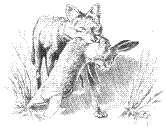Wildlife Damage Management, Internet Center for
Date of this Version
March 1995
Document Type
Article
Abstract
A variety of control methods used over an 80-year period (1915-1995) contributed to the effective and successful coyote (Canis latrans) damage management program that exists in Texas today. Traps, toxicants, shooting, denning, and dogs were important during the early years of the Texas Animal Damage Control Service (TADCS) program. Aerial hunting and snares evolved as important control tools following the ban on strychnine and Compound 1080 in 1972. The livestock protection collar (LPC) has received increased use in recent years and has been useful in resolving difficult depredation problems. ADC policy along with changing state and federal regulations and public opinion will dictate how specific control tools are used in the future.



Comments
Published in Coyotes in the Southwest: A Compendium of Our Knowledge. Symposium Proceedings, December 13–14, 1995, San Angelo, TX, edited by Dale Rollins, Calvin Richardson, Terry Blankenship, Kem Canon, and Scott Henke. Austin, Texas, 1996. Used by permission.